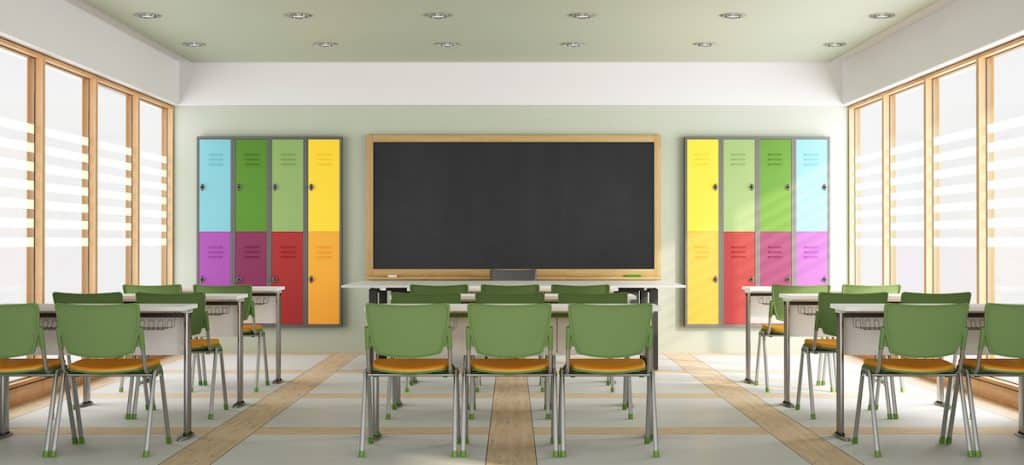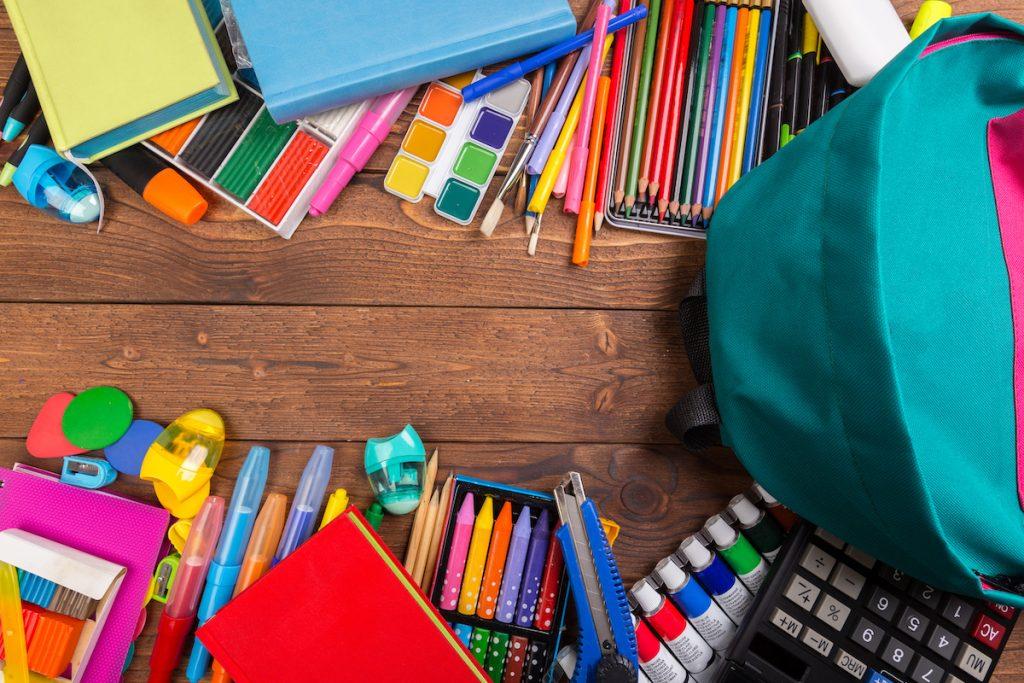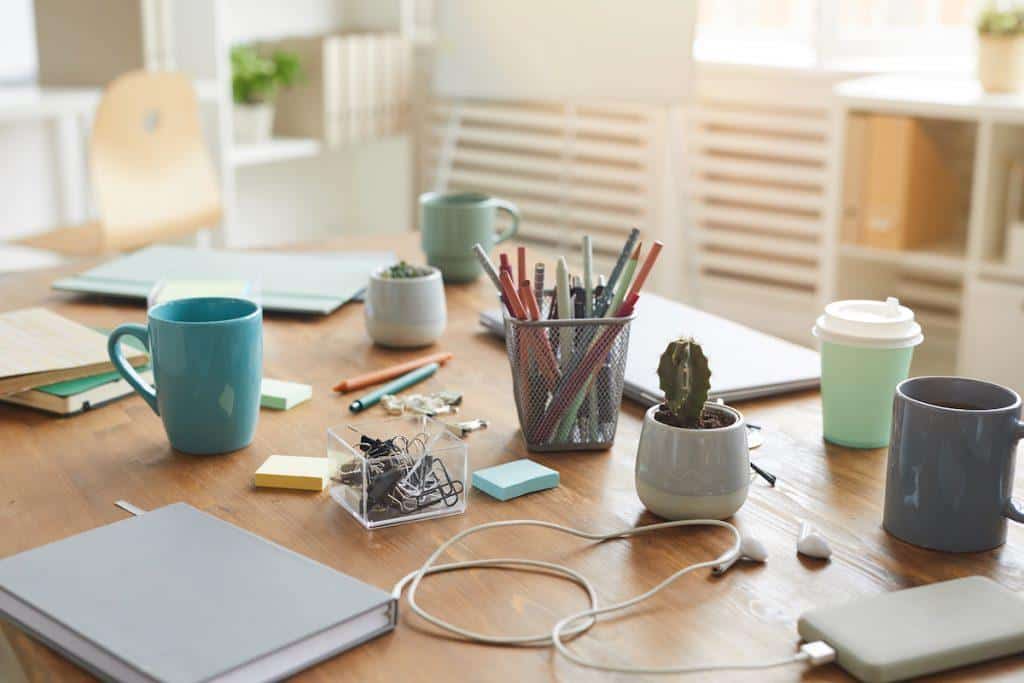No matter how organized of a teacher you are, there are times when items or materials in your classroom get misplaced or jumbled up. This situation can be frustrating, especially when you’re in the middle of a lesson and can’t find what you need. Clutter in classroom settings can lead to disruption because you’re trying to locate items quickly, and most kids won’t sit still for that long. However, with some simple tips, you can have a classroom that functions effectively and is also pleasant to look at.
Table of Contents
- Reasons To Declutter Your Classroom
- Why Do I Have A Cluttered Classroom?
- Ten Realistic Steps To Clear Your Cluttered Classroom
- Clutter in Classroom FAQs
- Keeping Your Classroom Clutter Free

Reasons To Declutter Your Classroom
For kids to be successful in your classroom environment, it’s vital to have quick access to the materials needed for lessons. Although you might not have given it much thought before, there are negative impacts for both yourself and the students you teach when items pile up around your room.
Time Wasted Needed For Instruction
One of the primary effects of too much clutter is the time you’ll waste on classroom instruction. For example, if you’re demonstrating a lesson on your projector and can’t find the teacher’s guide, it’ll take time away from what you’re trying to teach. This is why a decluttered environment is essential so that you’re not searching for things while kids eagerly wait for you to continue the lesson.
Increased Disruptions
Studies show that well-paced lessons that change classroom activities roughly every ten minutes are optimal for student attention and behavior. Keeping your lesson flowing smoothly would be much more challenging if you had to stop constantly and look for things. In addition, fewer things scattered in random places provide greater opportunities to keep kids engaged in learning.
Lesson Materials More Quickly Available
When you have an organized classroom, you know exactly where everything is at all times. As teachers, we can relate to needing to cover a lot of information in a given school day. In addition, as standards for student performance continue to become more rigorous, you can’t underestimate the importance of becoming highly organized in establishing and maintaining an effective learning environment.
Keeping Everything Isn’t Necessary
Have you ever moved into another teacher’s room and found items that have been there since you were in school? Although it’s important to keep some things for reference, such as textbooks or material from previous years, it’s not necessary to keep everything. For instance, there’s no need to keep an old set of encyclopedias that are now outdated. If you don’t use something regularly, there’s a good chance you can toss it.

Why Do I Have A Cluttered Classroom?
It’s important to realize how the clutter you see in front of your eyes gets there in the first place. By understanding why your classroom is getting out of hand, there’s a better chance of fixing the problem long-term.
Teachers Are Busy
Educators are busy from the time they walk into the school door until they go home (and they might even take work home with them). So it can be easy to understand why a classroom could become messy or cluttered, maybe with a good-hearted intention of handling the mess later but never actually getting around to it.
Don’t Notice The Clutter
You might be thinking, “how could anyone not notice piles of stuff lying everywhere?” However, in the midst of trying to keep 20 to 30 students engaged and well-behaved the entire day, the clutter might be the last thing on a teacher’s mind.
Too Hard To Figure Out
If you’ve ever had to figure out how to handle a big task on your own, you know how daunting it can be. The same is valid for decluttering a classroom, especially if you’ve let it go for too long. It can be so overwhelming that some might not even know where to start.
Lack Of Support
It’s important to realize that some teachers might not get the support they need. You may have this problem if you’re a relatively new teacher (with less than five years of experience). Maybe you haven’t had someone show you how to become better at staying organized throughout the school year. Teachers who keep their classrooms free of clutter often make it look easy.

Ten Realistic Steps To Clear Your Cluttered Classroom
Now the part you’ve all been waiting for, the answer to the question: How do I declutter my classroom? Here are ten practical steps you can take to get started today.
1. Schedule Time To Clean Your Room
No matter how busy you get, scheduling a time, even with your students, is essential to clean up your room. For instance, it could be the last five minutes of the day when everybody pitches in to take on a small task. Students love being part of a classroom community and helping out. An excellent way to do this is to have a “student of the day” who is responsible for tasks such as leading the room clean-up.
2. Set The Expectation Early In The Year
Students will rise to the expectations that you establish for your room. Good teachers have specific locations where everything is supposed to be. Student desks are often a problem, but they can be easily fixed with proper organization and thinking it through. Don’t allow any loose papers to be stuffed in their desks. Any classwork that was completed for the day should be placed in a take-home folder and sent home.
3. Invest In A Quality Label Maker
Having your classroom materials labeled makes it easier for you and the students you teach. It begins with having an efficient way to label everything. A good label maker will save you time and money in the long run. Inside your desk, you should know where all the “must-haves” are, such as staples, pens, paperclips, and so forth. Consider placing them in a small toolbox or storage container. It will be right at your fingertips when you need something.
4. Use Clear Storage Bins
Proper storage is necessary, especially if you teach subjects with many hands-on activities, such as math or science. Clear bins work well because you and your students can see what’s inside of them. Using your label maker to label each container with its contents is also a good idea. When it comes time to clean up, everything has a specific place to go, and it can be done efficiently.
5. Make It A Game With Timers
Although you’re cleaning up the room, you can make it seem like a game, especially if you teach at the elementary level. You can purchase countdown clocks that go directly on your whiteboard. Referring to the tip earlier, the teacher could ask everyone to complete their job within a specific time (i.e., three to four minutes). There could be an incentiveto help quickly, such as free time on computers or extra recess time the following day.
6. Effective Organization Of Paperwork
Teachers know they are often bombarded with a lot of paperwork, ranging from tests to picture day collection forms. It can be easy to let it pile up and get lost in the shuffle. But, it’s crucial to have a system for dealing with this paperwork as soon as it comes in. One way is to create a filing system with hanging files and manila folders. Then, color-coding these files will make it easier to find what you need quickly.
7. Always Have A Designated Space For Items
One critical way to stay organized is to make sure there’s always a designated space for everything in your room. Cleanup time becomes more effective when everything has its place. It will take some time to set this up initially, but it will be worth the effort later on in the school year. One example is having a special place for students’ backpacks and coats. Whatever you decide, stick with it and stay consistent with your plan for the rest of the year. However, don’t be afraid to tweak things if it’s not working.
8. Clear Flat Areas
Flat surfaces such as bookshelves and tables used for small group instruction are often magnets for clutter. Make it a point to clear these areas regularly. This will help prevent things from getting out of control. One simple way is to have a student double-check these areas at the end of the day. Then, should something be there, they know to put it away before they leave for the day.
9. It’s Okay To Purge
Hanging on to old workbooks that don’t cover your current standards isn’t doing anyone any good. The same goes for materials that are outdated or no longer needed. Don’t be afraid to get rid of things as you don’t use them anymore. You can always donate these items to another teacher or school. Send an email to your school saying you’re giving away freebies, and most of the time, you’ll get at least a few people who could use the things you don’t really need.
10. Use A Wall Calendar
A wall calendar is a great way to stay help you stay organized. While you’ll establish end of day cleaning, scheduling time for a more detailed job is also important. This could be bi-weekly or once a month. Use your calendar to schedule when you’ll be cleaning and what needs to be done. It’s one less thing you must remember, and you can always enlist help from other students to hold you accountable.
Clutter in Classroom FAQs
You can purge your classroom by getting rid of unnecessary items and having a systematic approach for handling paperwork, classroom supplies, and student materials.
Classrooms generally become over decorated when teachers think they are enhancing the learning experience. Keeping it simple with a few decorations is important to minimize student distractions.
Your classroom can become clutter-free if you have designated areas where materials should be. Teachers should also enlist the help of their students to ensure the flow of the classroom environment stays in tact.
Keeping Your Classroom Clutter Free
Clutter in classroom environments can have a negative impact on student learning. It can be distracting and overwhelming, making students feel stressed. As a teacher, try to stay on top of the clutter in your room and have a system for dealing with it. By following the tips above, you can help ensure your classroom is a calm and organized space where students can thrive.
